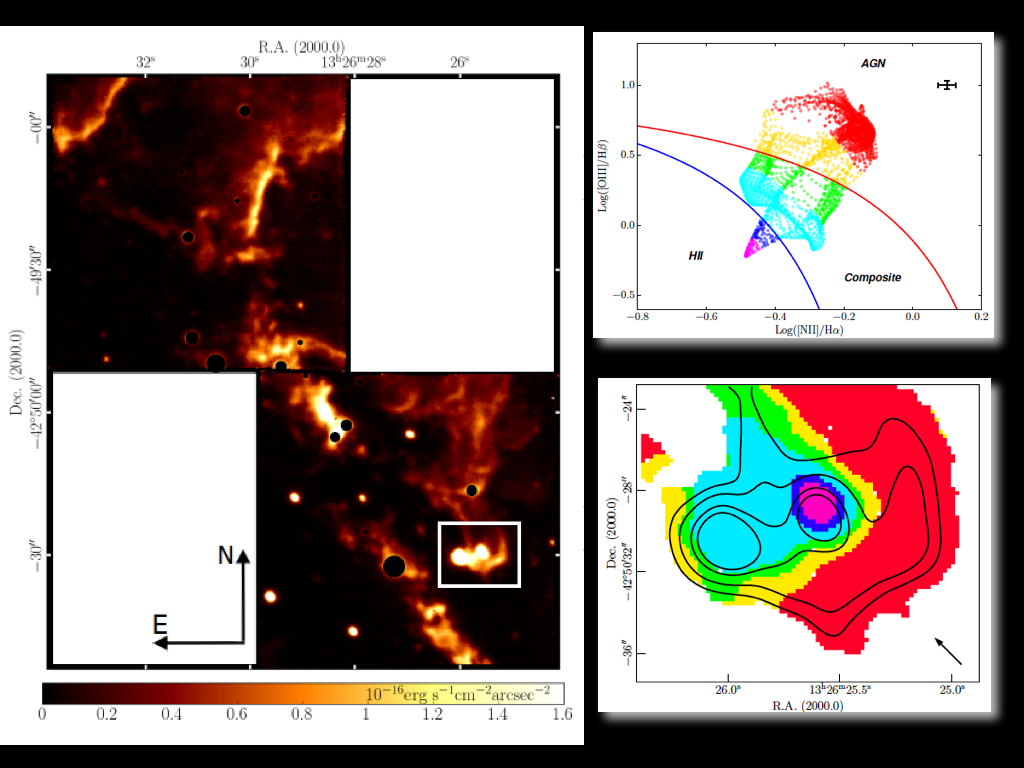Daily Image
17-05-2016A star is born!
| Submitter: | Raffaella Morganti & Francesco Santoro |
| Description: | One of the goals of the RadioLife ERC project is to understand the influence a radio jet has when passing through the surrounding gas. If one thinks about this process, it is quite natural to imagine that the jet would push aside all the gas and there is no gas left to form stars from. This is indeed one of the effects often observed (see for example Daily Image 26-01-2016 or 18-08-2015). However, surprisingly also the opposite can happen: the jet compresses the gas so much that star formation may start. Thus a "constructive" encounter may happen instead of only a "destructive" one! We have used the Multi-Unit Spectroscopic Explorer (MUSE) on the ESO-VLT to discover a region where such an effect is happening: a newly born star in a filament of gas near the closest radio galaxy and active nucleus, Centaurus A, and we have studied this in detail. The picture on the left shows the region of the so-called outer filament of Centaurus A as observed by MUSE (see also the Daily Image of 17-02-2015) and on the right how the conditions of the gas change across the region. Red regions indicate gas affected only by the radiation from the active nucleus, but purple shows the locations where the conditions in the gas are determined by the radiation from a newly-born star. In places in between a mixture of these two ionization mechanisms are operating. Thus, in addition to allow to study the process of star formation under the influence of an active nucleus, these results emphasize the complexity of this process. This is important if we want to be able to identify this process in objects that are much more distant (where we cannot see all the details). The results also illustrate that these young stars influence the gas over only a limited region, answering one of the main open questions about this process. The results are presented in the paper: "Embedded star formation in the extended narrow line region of Centaurus A: extreme mixing observed by MUSE", by Francesco Santoro; Raymond Oonk, Raffaella Morganti, Tom Oosterloo, Clive Tadhunter, published in Astronomy & Astrophysics http://arxiv.org/abs/1604.03891 ). |
| Copyright: | ASTRON |
| Tweet |  |
